Bur chervil identification and control
Information about the weed bur chervil. Bur chervil is also known by its Latin name, Anthriscus caucalis.
About this weed
Bur chervil is a weed of concern in King County. This means control is not required but always recommended. This recommendation is due to its impacts in King County, identification difficulty, and difficulty to control.
Bur chervil is known as Anthriscus caucalis and it is in the carrot family. It is also known by the common name bur parsley.
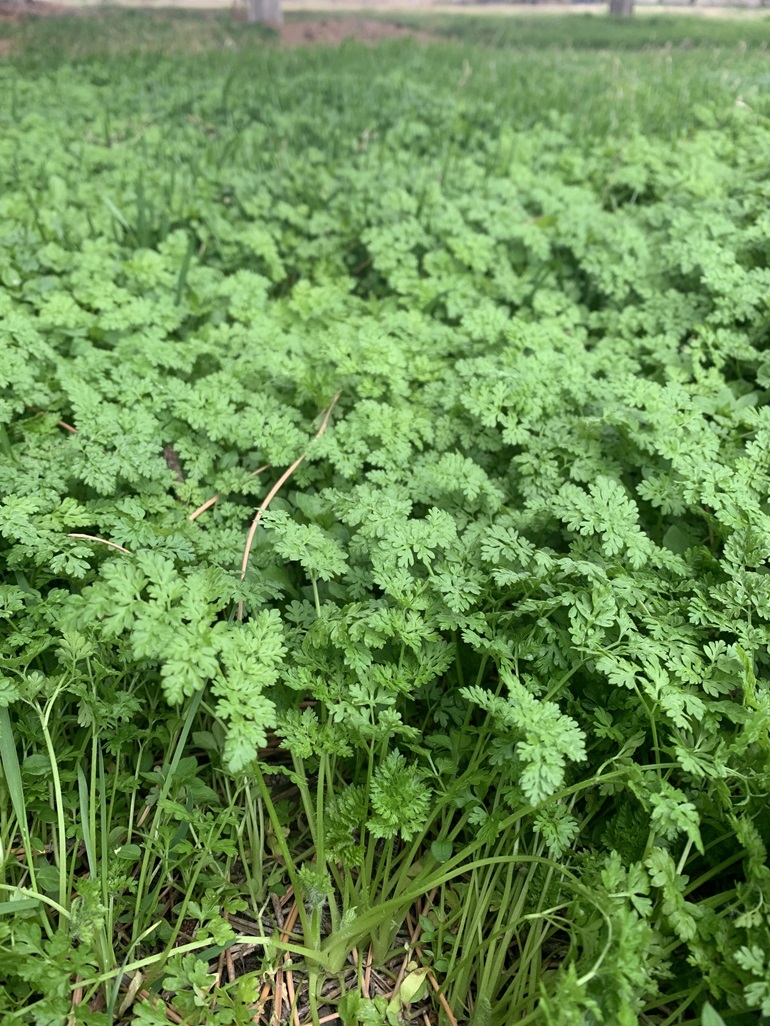
Why it's a problem
Due to the velcro-like burs on the fruit of bur chervil, it is spread widely via equipment, clothing, and fur. Bur chervil is highly adaptable. It can tolerate a range of conditions. This includes exposed, sandy soil to saturated soil in pastures, natural areas, waste places and disturbed areas. Bur chervil is an aggressive competitor for light, water and nutrients. It often forms dense colonies that outcompete and displace desired plants and forage.
Public health impacts of bur chervil include toxins within the plant that can cause skin irritation. It can also host a viral disease that infects other plants in the carrot family. The King County Noxious Weed Control Board encourages property owners to remove bur chervil where possible, and to avoid introducing it to new landscapes.
Plant description
In King County, bur chervil will grow in a variety of contexts - from damp places (e.g., stream edges) to open woodland and woodland edges; along roads and trails, and by walls, fences, and buildings in low-elevation areas. It is native to parts of Europe and Asia.
Bur chervil typically grows as a biennial (two-year life cycle) that takes two years to mature to flower. Although some plants may flower in both the first and second years. In Western Washington, rosettes that develop in the later summer overwinter and begin rapid growth in early spring. While a separate cohort begins to appear as a dense carpet of new seedlings and forms first true leaves in late winter/early spring. Bur chervil typically flowers in early spring and again later in the summer/autumn.
These are a few key features to help confirm ID:
- Small umbrella-shaped clusters of white flowers
- Mostly smooth, hollow stems that range in color from pink to green and a fringe of white hairs at the nodes
- Divided, triangular, fern-looking leaves with soft, white hairs mostly on the undersides
- A deep taproot (carrot family)
- Bristly, oval fruits
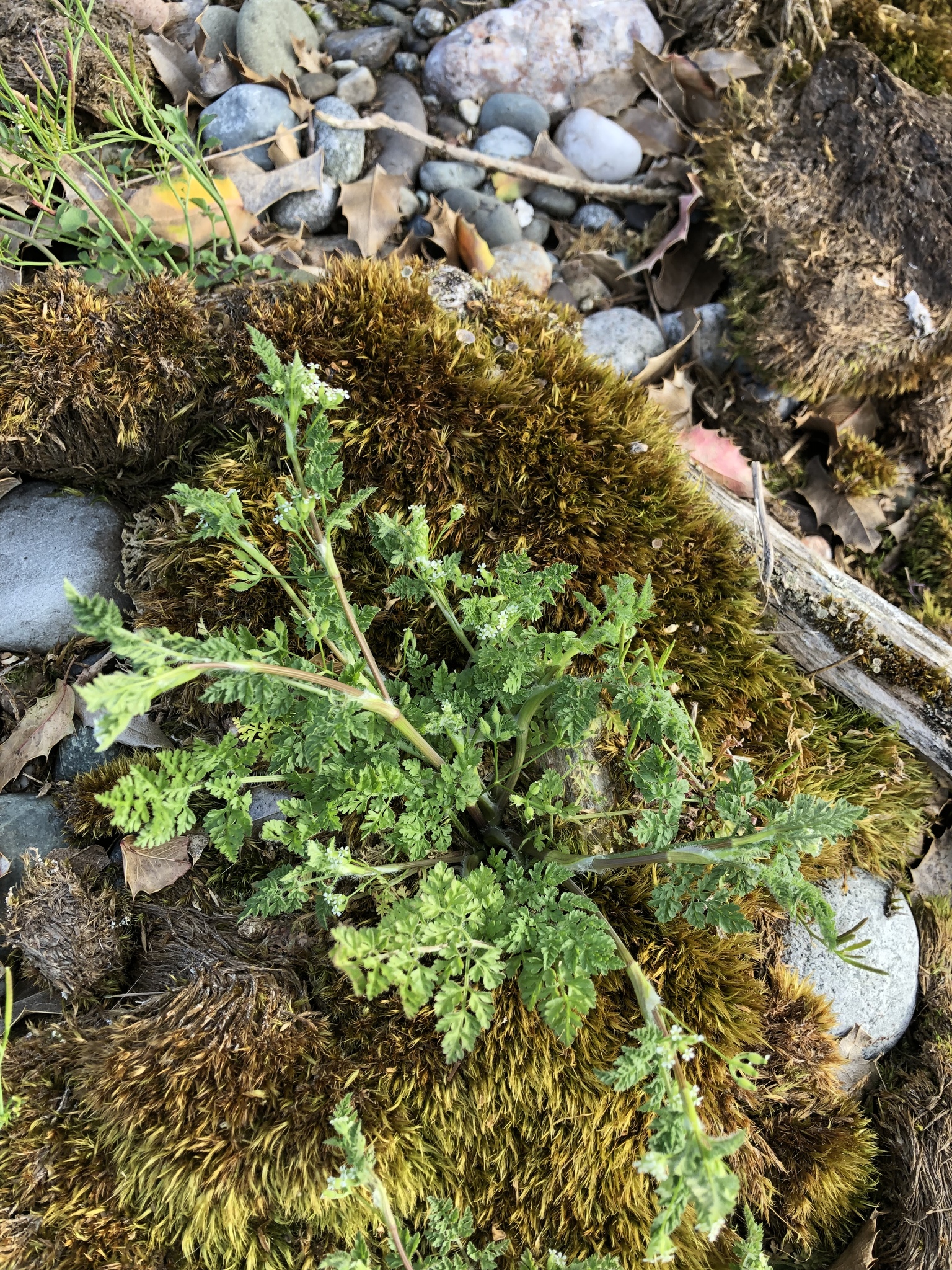
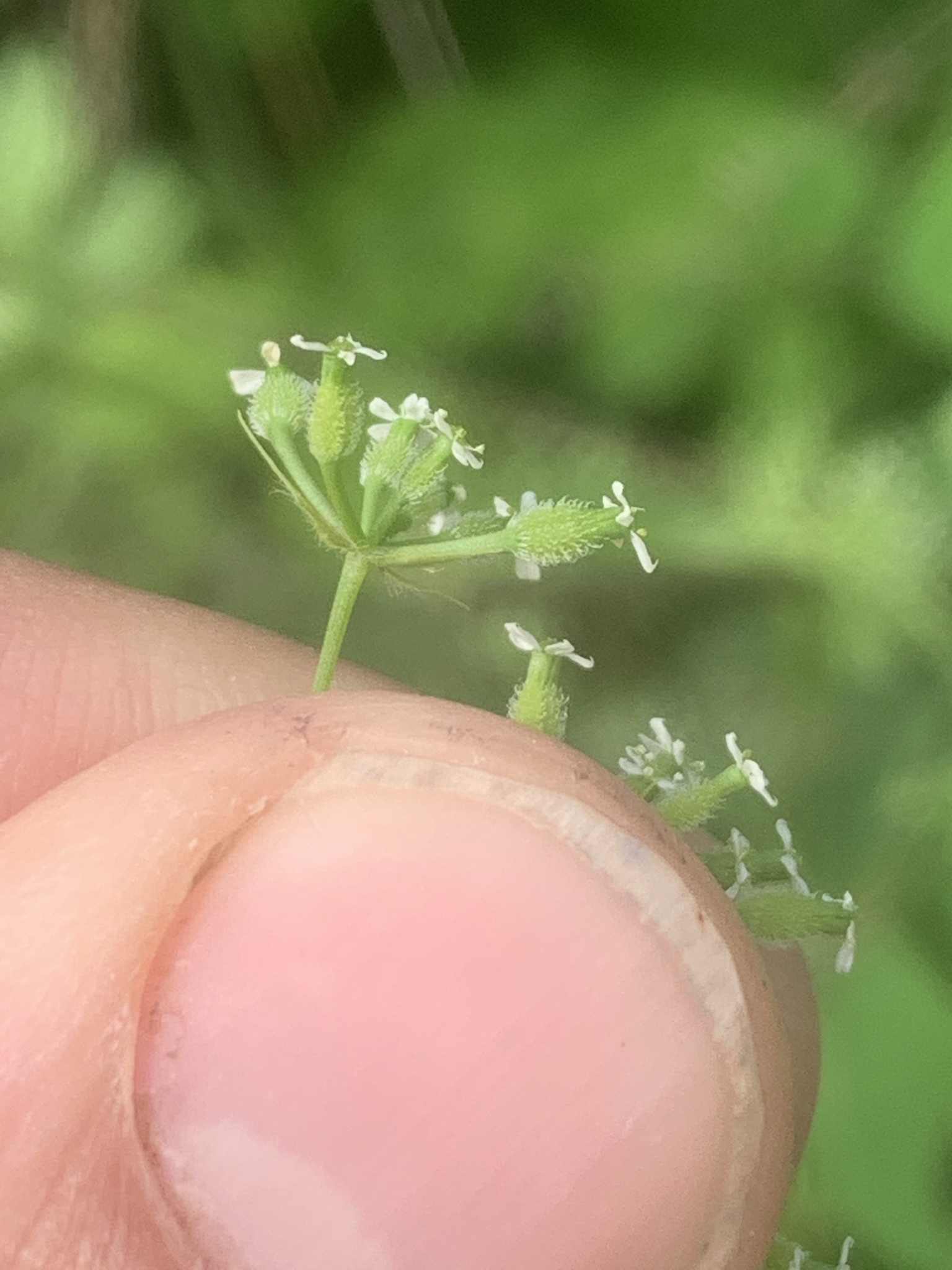
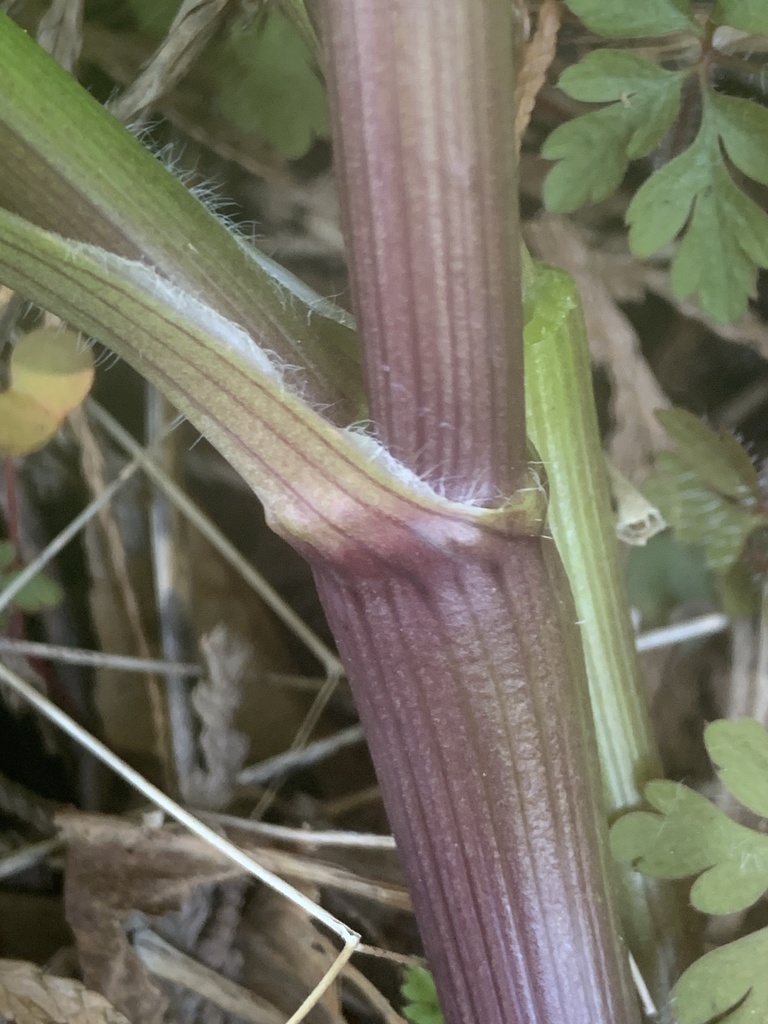
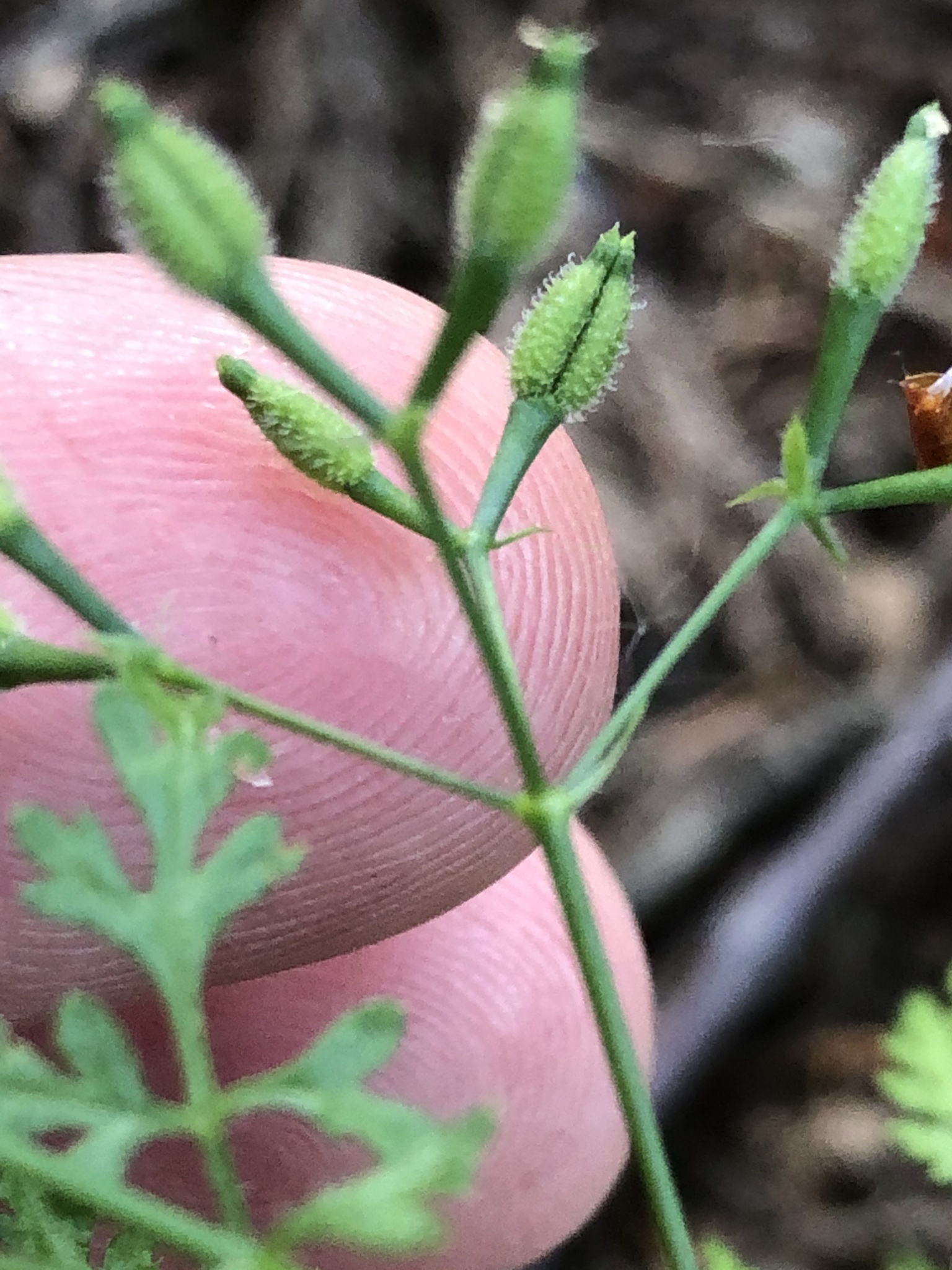
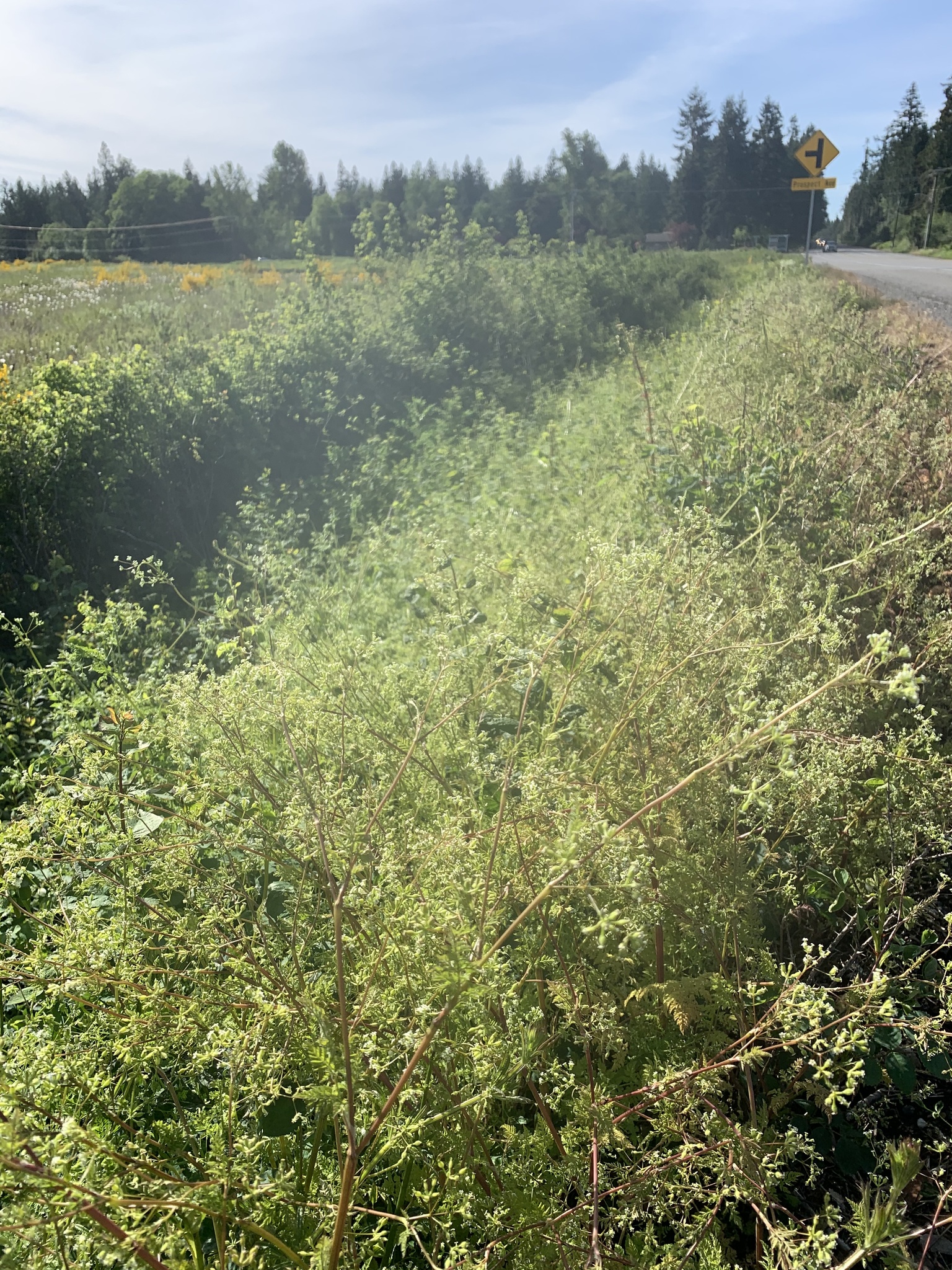
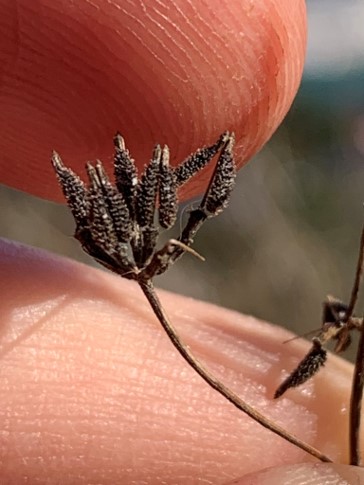
Be aware of look-alike plants
Many plants look similar to bur chervil, including:
- Wild carrot/Queen Anne's Lace (Daucus carota)
- Poison hemlock (Conium maculatum)
- Rough chervil (Chaerophyllum temulum)
- Wild chervil (Anthriscus sylvestris)
Other similar looking plants are members of the parsley/carrot family such as fennel, chervil, and anise.
When in doubt, take photos and share them with us or report them on iNaturalist.
What to do if you find it
Because bur chervil is already naturalized in several places in King County and is not on the State Noxious Weed List, we are not tracking locations. However, if you know of any heavily impacted areas, especially outside of the urban growth area, please report it. Property owners are not required to control it, but it is strongly encouraged. If you would like information or advice on how to control this plant, please continue reading below or feel free to contact our office. If you are concerned about where the plant is growing on public lands or trails, we can direct you to the agency responsible for that area.
Control methods
Prevention
To prevent the spread of bur chervil, minimize soil disturbance near known populations of it. This can result from vehicles, machinery, off-trail and off-leash dog walking, and other activities. Watch roadsides and fence rows for new populations.
Manual control
For individual plants or small patches, hand pull or dig up the roots when the soil is moist and before it goes to seed. Take care to remove all roots, as plants can regrow from the root crown. Disturbed areas should be mulched and/or re-planted to prevent spread of bur chervil. Bur chervil contains toxins that can cause skin irritation. Wear gloves and long sleeves to avoid skin contact.
Mechanical control
While mowing may temporarily reduce bur chervil’s seed output if done while still in bud or early flower, it will not kill the plants. Stems will grow back from the root crown. Mowing bur chervil can expose someone to toxins present within the plant and is therefore not recommended. Tillage can be used during the dry months (before seeding) to uproot and dry out root parts. To enhance effectiveness of tillage, combine with other control methods, such as chemical control.
Chemical control
Stay safe when using herbicide:
- Always read the label before use.
- Wear a long-sleeved shirt, long pants, shoes, and eye protection.
- Follow state and local regulations.
Herbicide may be useful for large, dense infestations. If the site is wet or along the water’s edge, it may require a permit issued by the state Department of Ecology. See Washington Department of Ecology Aquatic Pesticide Permits for details.
Feel free to contact us for permitting information or information on hiring a licensed aquatic weed contractor. Both Glyphosate (nonselective) and Triclopyr (broadleaf selective) have been effective on early-flowering and vegetative individuals, especially in rosette form in spring or early fall.
If you are qualified to do so or if your infestation is not near the water’s edge, follow these chemical control general best practices:
- Apply to foliage in the spring or fall on rosettes and dense regrowth.
- Take care to avoid desirable plants.
- Use aquatic-approved products in situations where water is present. Follow the product label and all laws and regulations regarding herbicide use on the site. Contact your local noxious weed program or county extension office for recommendations on herbicides.
Bur chervil seedlings develop early in the spring and grow rapidly with moisture. The earlier the intervention, the more effective the control.
Disposal instructions
If the plants are in or near seeding form, carefully cut off the flowering parts and place in a bag without dispersing the seeds. Either dispose of non-propagative bur chervil vegetative parts in yard waste, allow to dry on site with roots exposed, or take to a transfer station for disposal. Never dump plant material in parks or natural areas because weeds can spread from yard waste piles. Consider covering prior areas of infestation with mulch and/or replanting with beneficial and/or native species. For larger infestations, plant material can be pulled or cut and piled, tarped, and monitored for any skips.
Washington State Noxious Weed Control Board pamphlet on noxious weed disposal

 Translate
Translate